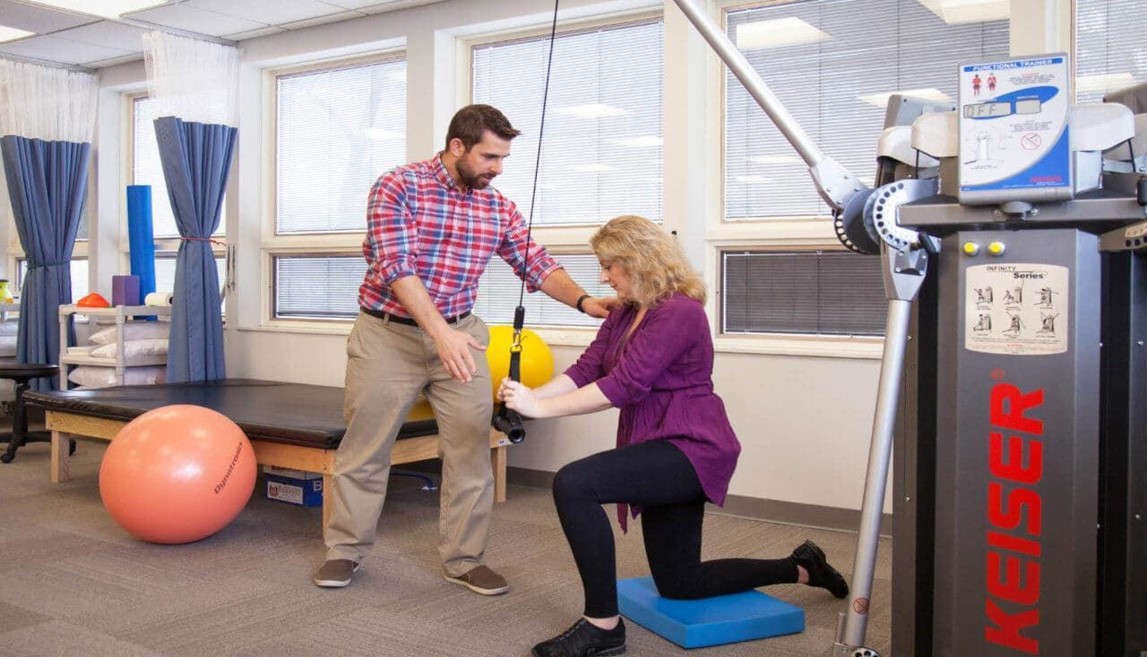
The nervous system is probably the most complex and, at the same time, the most delicate system in the human body. Unlike other cells, nerves can’t divide and regenerate. Once damaged or completely destroyed, they are lost for good, unlike skin, bone, or muscle cells. That is why nervous diseases are so severe, and their treatment should be approached very studiously.
Nerves run throughout the entire body. Any damage to organs can be related to the nervous system and vice versa; any disease of the nervous system has an impact on the functioning of the organs. It often happens that the causes are impossible to determine. You can find out more about triggers of neurological conditions in this link.
After the damage to the nervous system is determined, the goal is to restore its function as much as possible. Regardless of the cause, patients receive primary health care to treat the initial health problem. The next step is neurological rehabilitation to enable.Â
 the patients to return to normal life as soon as possible.
The Goal of Neurorehabilitation
People with neurological diseases have suffered significant damage to the nervous system due to injury or are affected by progressive degenerative processes such as Parkinson’s disease or multiple sclerosis. These diseases not only represent a severe physical obstacle for the patient but also dramatically change the quality of their lives and affect their loved ones.
Neurological diseases affect the ability of patients to cope with everyday challenges. Regardless of the type of disease and whether it hits central or peripheral nerves, sufferers can lose control over their lives. But with the right therapy, they can regain neural functionality and learn to live with a possible disability.
On the following page, learn more about common neurological diseases:
https://www.medicalnewstoday.com/articles/neurological-disordersÂ
Neurological rehab is a process that lasts and includes a variety of treatments. It’s not a universal solution for all patients but is tailored to their unique needs, health conditions, primary illnesses, age, and body areas that are most affected. In any case, its goal is to speed motor and cognitive recovery processes, compensate for lost functions, and prevent their further loss and condition from worsening.
How This Therapy Is Carried Out

This rehab treatment is a multidisciplinary approach, which means that it employs experts from different fields of medicine with one goal – to restore the functionality of the nervous system. Besides the neurologists, there are also physiatrists and neurosurgeons. Quite often, it includes the involvement of experts in work and occupational therapy, psychologists, speech-language pathologists, and many others.
One of the pillars of neurorehabilitation is physical recovery. Its focus is the restoration of the patient’s physical abilities, which are most often threatened or impaired after physical injuries, damage to peripheral nerves, stroke, etc. These people have problems with movement, balance, and even standing, so it’s necessary to help them perform these activities.
Mobility, balance, and gait training are methods that neuro rehab experts prescribe to most patients. An alternative to these treatments can be aquatic therapy, as the water environment reduces joint stress and helps patients increase their range of motion. Each of these therapies aims to help them regain gait and improve coordination and balance.
Another form of neuro rehab is occupational therapy. Its goal is to help patients retrieve basic life skills and independence, at least to a certain level. It includes working on fine motor skills and re-teaching patients to do everyday tasks, like dressing up, eating, and bathing, with as little assistance as possible.
Who Can Benefit from Neuro Rehab

The nervous system can be damaged by various factors. The causes of these diseases can be infections, structural defects, vascular disorders, spinal and brain injuries, degenerative conditions, autoimmune diseases, etc. Most people who undergo neurorehabilitation do so after a stroke, traumatic brain injury, or diabetic neuropathy, but also conditions such as Parkinson’s disease or Alzheimer’s.
For stroke and brain injury sufferers, neurological rehab can take many forms. The priority is to improve motor and cognitive abilities caused by current brain dysfunction. Some patients might need speech and occupational therapies.Â
If necessary, this treatment can include non-medical assistance. That could be the engagement of psychiatrists and the patient’s family. More on the stages of stroke recovery read here.
In the case of progressive diseases such as Parkinson’s disease, neurological rehabilitation should enhance mobility and provide lifestyle adjustments. Unfortunately, there’s still no definitive cure for this condition, but this therapy can help patients cope with the challenges of the disease successfully.
The Importance of Neurological Therapy Rehabilitation
Neurorehabilitation can take place in a hospital or a specialized rehab facility or be an outpatient treatment. The first two options provide comprehensive and round-the-clock care. The second method allows more flexibility and makes patients feel more comfortable and relaxed because they can come for hospital treatments while they stay at home.
In any case, neurological rehabilitation goes far beyond regaining physical abilities. It helps the patient deal with the psychological effects of their condition, learn how to live with a disability, and regain their social skills.Â
At no point should we forget the importance of psychological support, especially for people whose lives have been significantly changed by neurological diseases. The final goal is to improve their overall well-being despite disease.
Neurological rehab isn’t just a treatment to make people feel physically better. It gives them support and hope to rediscover the joy of life and enjoy it to the fullest despite the disease that might affect them.



Facebook Comments